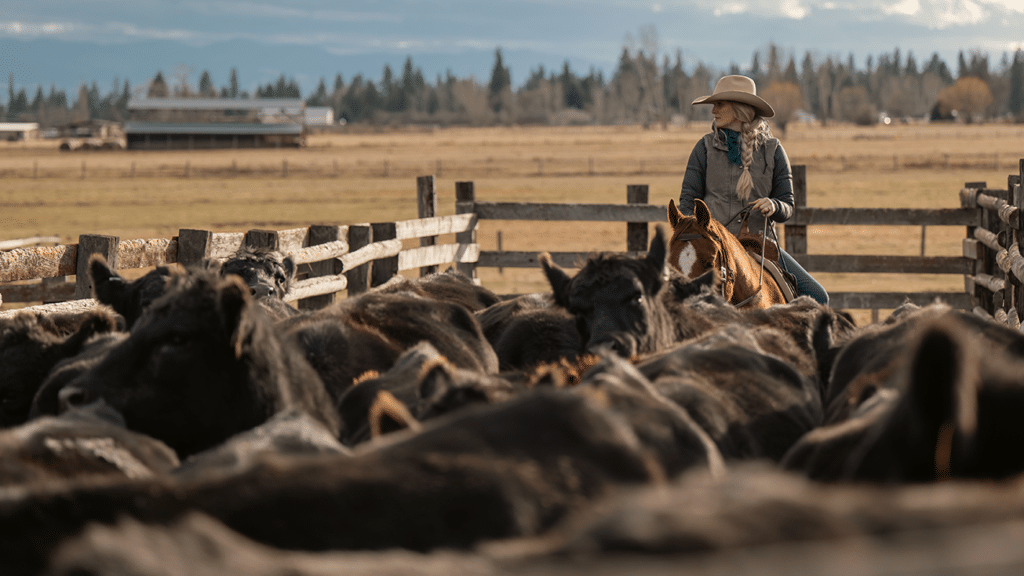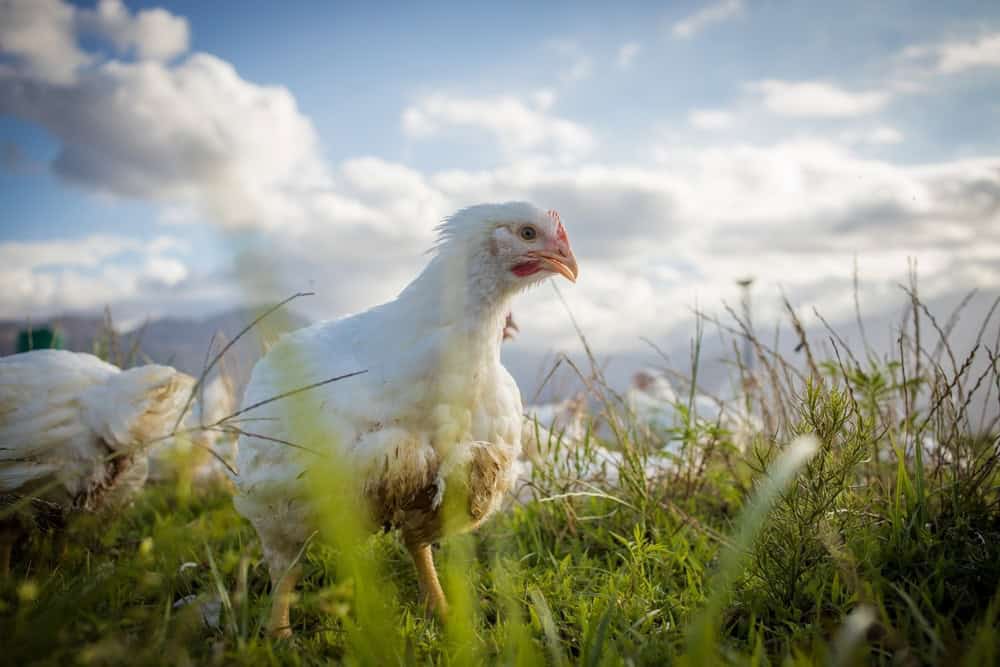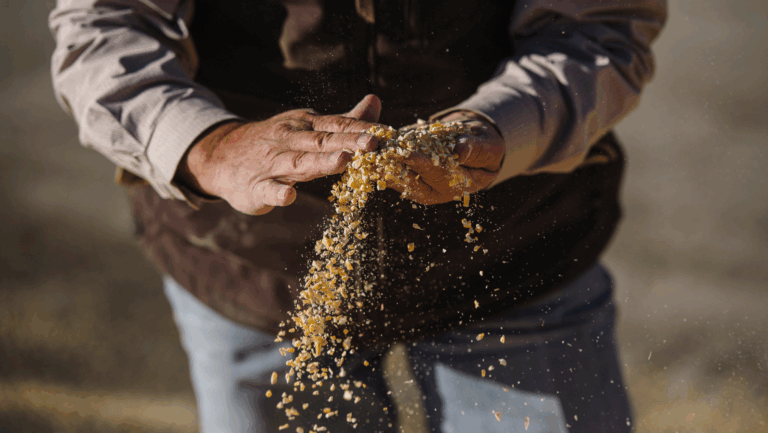Poultry, Dairy, and Livestock Market Updates
Livestock market updates provide farmers with opportunities to plan ahead.
The USDA released livestock market updates in April, providing valuable insight into the possible paths for 2024. After a few years of hardship caused by COVID-era supply chain issues, increased input costs, and other challenges, the livestock market may be beginning to stabilize.
In this article, we’ve taken out key insights from the report along with other industry news to give you a quick and holistic view of the livestock commodity market.
Cattle

Cattle inventory is at record lows, but production is strong.
At the beginning of 2024, the beef herd inventory was the lowest it’s ever been since 1951 due to a combination of high input costs, drought, and female cattle being marketed at high-than-normal rates. In recent years, some farmers have supplemented the beef supply with dairy cows, but as bird flu risks grow, that route looks less likely.
Steer and heifer slaughter is slower than in previous years, but this may be due to record-high carcass weights accounting for 65 million pounds of extra beef from the same number of cows. After harsh winter weather inhibited normal feeding, this record-high weight is a good sign.
Production is expected to pick up pace in the second half of the year due to higher beef prices.
Prices are on the rise after a short drop caused by bird flu anxieties.
When bird flu was first spotted in dairy herds, live cattle futures dropped $12 due to long-term concerns about transmission due to tainted meat. As of April 2024, bird flu has not been detected in any beef cattle, and dairy farmers are taking precautions to limit the disease spreading. AgAmerica Economist Dr. Cliff Shelton believes the impact on beef prices is low. “There are no reports of beef cattle being infected at this time,” he said.
However, prices have recovered from this short-term decline, with 750–800 pound feeder steer averaging $252.09 per hundredweight (cwt) in March, which is $64 more than March last year. The annual forecast for feeder prices remains unchanged at $254.50 per cwt, a 16-percent increase from last year.
Exports remain above the four-year average but are in decline.
Beef exports remain slightly above the four-year average but have decreased three percent compared to last year. U.S. beef may face challenges competing with other exporters due to low herd inventory keeping beef prices high.
Hogs

Production and inventory are on the rise.
After a hard year in 2023, hog inventory is up one percent compared to March last year. Pork supplies have already begun to rebalance, and the market is expected to strengthen as the year progresses.
Commercial pork production rose one percent compared to last year, and it is projected to increase as much as five percent in the fourth quarter.
Demand for pork is on the rise, but the industry faces hurdles.
California Proposition 12 and Massachusetts Question 3 have the potential to impact sales in 2024. Demand for compliant pork has consistently outpaced supply, which may steer traditional pork farmers to upgrade facilities to potentially fill this gap.
Pork’s biggest hurdle in recent decades has been low demand, but high beef prices may be driving consumers to opt for pork instead.
In March, hogs averaged $55.24 per hundredweight, up 1.8 percent from 2023.
Conflict abroad is increasing demand for U.S. pork.
The conflict in Eastern Europe and turbulence in European farm communities have limited European supplies, increasing the demand for U.S. pork. In China, African swine fever has reduced Chinese pork output by 27.9 million metric tons. In response, China’s General Administration of Customs has granted approval for 12 U.S. pork establishments to export to China.
In February 2024, U.S. exports were 18 percent higher than the same time last year. Experts have a hopeful outlook that this increase will continue.
Broilers

Production is tentatively projected to do well.
The forecast for broiler production in 2024 comes with a significant amount of uncertainty thanks to stagnation in hatchability and survivability. Although broiler layer numbers have increased, eggs per layer have dropped, which may affect inventory in the future.
Chicken production increased four percent from February 2023, but slaughter per day is down one percent YoY and carcass weight remains unchanged at 6.49 pounds per bird.
After years of volatile pricing, the market is stabilizing.
Poultry prices have been volatile in the last few years, but the outlook for 2024 predicts a more stable market, with small changes in supply and demand canceling each other out.
The March composite wholesale broiler price was 129.52 cents per pound, down half a cent from last year, but 22 cents above the five-year average.
Lower prices abroad are threatening U.S. exports.
Brazil, the world’s largest exporter of broiler meat, has increased outputs at lower prices, threatening U.S. exports. The relatively high cost of U.S. poultry combined with lower demand in China has resulted in a 10.2 percent decrease in broiler exports from February 2023 to February 2024.
Dairy

Inventory and production are down, but more concentrated milk fats may reduce the supply gap.
Although Bird flu was found in dairy herds in five different states, the impact on production has been low. “It’s too soon to say if this will have larger impacts in the future should the virus spread, but it should not affect dairy production at this time,” said AgAmerica’s economist Dr. Cliff Shelton.
Over the past eight months, both dairy herd inventory and milk production have decreased. The milking cow herd was down 89,000 head from February 2023. However, higher concentrations of fat, protein, and other solids (lactose and minerals) have increased substantially, meaning less milk is required to make the same amount of dairy products.
Dairy prices are declining overall.
Dairy products are down overall thanks to lower feed costs and improved forage supply. Cheddar cheese, 500-pound barrels, dry milk, and dry whey decreased by 11.34, 16.60, 2.22, and 3.66 cents per pound, respectively. The only dairy product on the rise is butter, which increased 4.05 cents per pound.
Cheese and whey are the silver lining of dairy exports.
Dairy prices are also on the decline abroad, with only butter increasing in price month-over-month. Export value declined 16 percent in 2024. Despite this challenging scenario, cheese and high-protein whey exports saw excellent growth at the beginning of the year, which may provide some hope for dairy farmers looking to export.
Eggs

Egg production is up, but bird flu is still impacting inventory.
The bird flu is still impacting the overall market, and although some major producers like Cal-Maine Foods Inc. experienced hen casualties in the millions, the effects of the flu have not been as severe across the board. “Assuming producers remain vigilant against the spread of avian flu, we’re likely to see prices settle even further in 2024,” said Shelton.
Egg production is up five percent from February of 2022, and the average daily lay rate is 82.2 eggs per 100 layers, an increase of two percent. Flock inventory is almost stagnant, increasing only 0.6 percent from last year.
Experts are hesitant to lock in a prediction for egg prices.
The outlook for egg prices comes with a wide margin, with a prediction interval between -6.9 to 18.7 percent. As of March 2024, egg prices were expected to increase an average of 4.8 percent, but experts remain wary of bird flu affecting predictions.
Increased demand abroad is promoting U.S. egg exports.
Compared to last year, egg product exports increased by 2.9 million, while shell egg exports increased by 7.3 million. This rise can be partially attributed to greater demand in Canada, Japan, and the European Union.
Stay Informed with Monthly Updates
New legislation, fluctuating trade conditions, and supply chain shifts can be hard to track when you’re also operating a farm. At AgAmerica, we keep track of important agriculture news for you and create easy-to-digest, concise newsletters delivered directly to your inbox twice a month.
Subscribe to the newsletter today and never miss an important market update.






